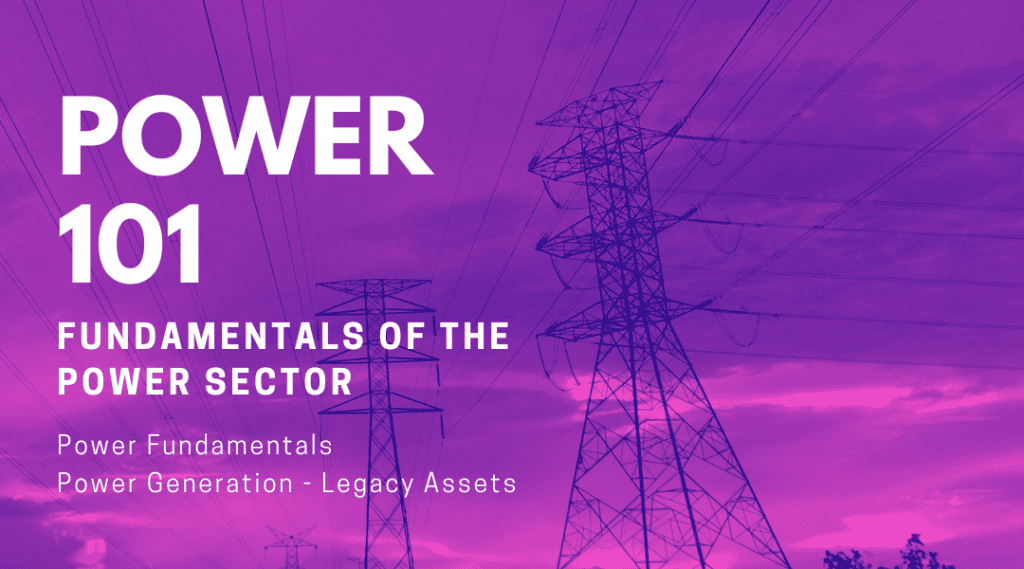Geothermal energy is a renewable energy source that is derived from the heat of the Earth’s core.
This heat is produced by the natural decay of radioactive materials deep within the Earth’s crust, and it is constantly replenished over time.
Geothermal energy can be used for electricity generation and heating, and it is considered a clean, reliable and sustainable source of energy.
Geothermal power plants typically use hot water or steam from underground reservoirs to power turbines and generate electricity.

Whether it’s oil and gas, power, or renewables that is your chosen career path, our e-learning courses can help you get a leg up on the competition and get your food in the door.
We often hear from learners who successfully use our courses to prepare for the interview process. After all, you’re using the same courses that companies themselves use to prepare their teams.
As this student passed on:
I would like to thank you for your brilliant Oil 101 materials. I did use it to prepare for the recruitment process, and managed to take a new role in the oil and gas industry!
Get started with our Energy 101 courses today!
There are three main types of geothermal power plants: dry steam, flash steam, and binary cycle. In a dry steam plant, steam is directly extracted from underground and used to power turbines.
In a flash steam plant, hot water is pumped to the surface and then allowed to boil into steam.
In a binary cycle plant, hot water is pumped to the surface and then used to heat a secondary fluid with a lower boiling point, which is vaporized and used to power turbines.
Geothermal energy can also be used for heating and cooling purposes through the use of geothermal heat pumps.
These pumps use the stable temperature of the Earth to provide heating in the winter and cooling in the summer, and they are widely used in residential and commercial buildings.
Geothermal energy has many advantages, including being renewable, reliable, and available 24/7.
However, the availability of geothermal resources is limited and geothermal power plants can only be built in areas where geothermal reservoirs exist.
Additionally, the construction and operation of geothermal power plants can be expensive and there are potential environmental concerns associated with the drilling and use of geothermal reservoirs.
Is geothermal energy renewable?
Yes, geothermal energy is considered a renewable energy source because it is derived from the natural heat of the Earth’s core, which is constantly replenished over time.
The Earth’s geothermal heat is generated by the natural decay of radioactive materials deep within the Earth’s crust, and it is estimated that the Earth’s internal heat could provide a virtually limitless supply of energy.
Unlike non-renewable energy sources, such as fossil fuels, geothermal energy does not depend on finite resources that can be depleted over time.
Additionally, geothermal energy does not produce greenhouse gas emissions, which contribute to climate change and air pollution.
However, while geothermal energy is renewable, the availability of geothermal resources is limited and geothermal power plants can only be built in areas where geothermal reservoirs exist.
This can limit the potential for widespread deployment of geothermal energy compared to other renewable energy sources, such as wind and solar, which are more widely available.
Where are the largest geothermal power plants in the US?
The largest geothermal power plant in the United States is the Geysers complex, located in northern California.
The Geysers complex has a total installed capacity of over 1,500 megawatts (MW) and includes over 20 individual power plants.
Other large geothermal power plants in the US include:
- The Salton Sea Geothermal Field in California, with a total installed capacity of over 500 MW
- The Bottle Rock Power Plant in California, with a total installed capacity of 55 MW
- The Tuscarora Geothermal Power Plant in Nevada, with a total installed capacity of 24 MW
These power plants are all located in areas with significant geothermal resources, such as hot springs or volcanic activity, which allow for the generation of electricity from the Earth’s natural heat.
What companies are involved in geothermal energy?
There are several companies involved in the development and operation of geothermal energy projects around the world.
Some of the largest and most well-known companies involved in geothermal energy include:
- Ormat Technologies – Ormat is a leading geothermal energy company with operations in the United States, Latin America, Africa, and Asia. The company develops and operates geothermal power plants and provides geothermal energy solutions for a variety of applications.
- Enel Green Power – Enel Green Power is a global renewable energy company that develops and operates geothermal power plants in Italy, the United States, and other countries around the world.
- Calpine Corporation – Calpine is a US-based power company that operates several geothermal power plants in California and Nevada.
- Reykjavik Geothermal – Reykjavik Geothermal is an Icelandic company that develops geothermal power projects around the world, including in countries such as Ethiopia and Chile.
- Chevron Corporation – Chevron is an oil and gas company that also has significant investments in geothermal energy. The company operates geothermal power plants in Indonesia and the Philippines.
- Berkshire Hathaway Energy – Berkshire Hathaway Energy is a subsidiary of Warren Buffett’s Berkshire Hathaway conglomerate, and it operates several geothermal power plants in California.
These are just a few examples of the many companies involved in the development and operation of geothermal energy projects around the world.
Related Resources
Power 101
What is a Nuclear Power Reactor Operator
Watts, Kilowatts, Megawatts, Gigawatts
Jobs Data:
Global Energy Talent Index (GETI)
US Energy & Employment and Jobs Report (USEER)
Career Path in Energy Articles
Is Oilfield Services/Equipment a Good Career Path
Is Oil and Gas Production a Good Career Path
Is Electric Utilities a Good Career Path
Is Power Generation a Good Career Path